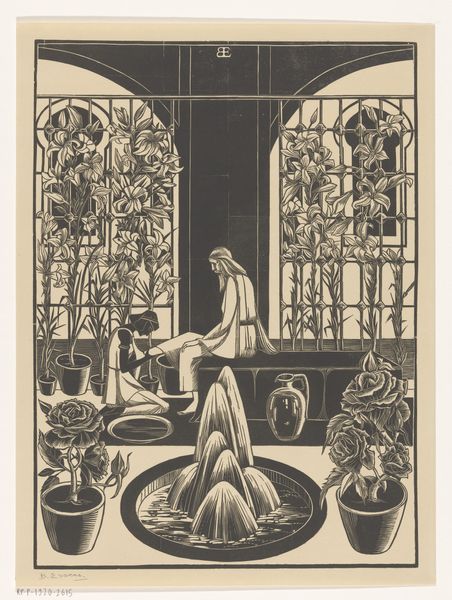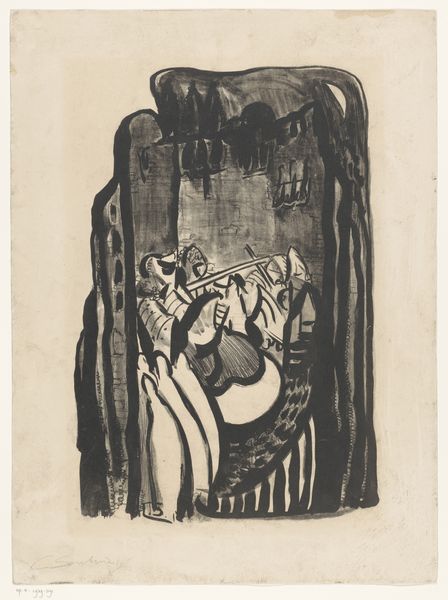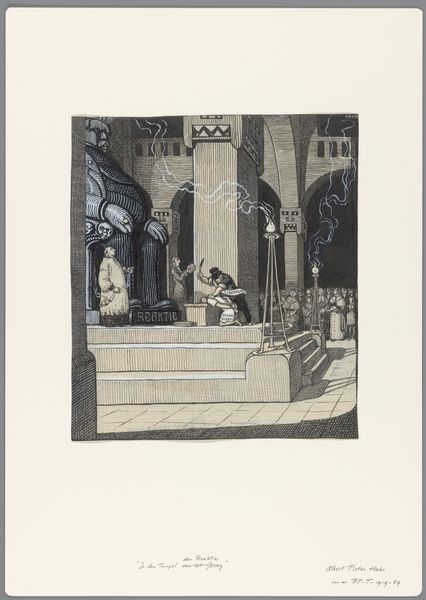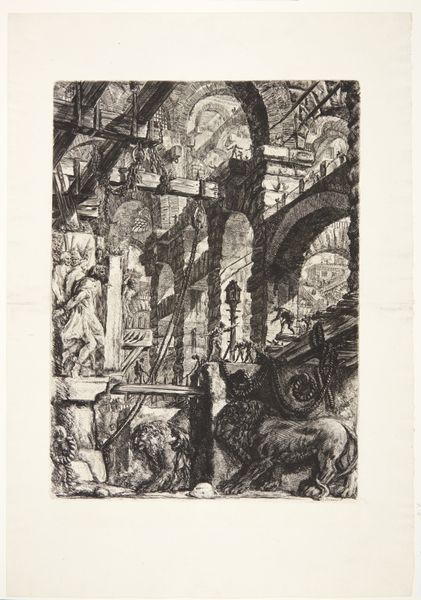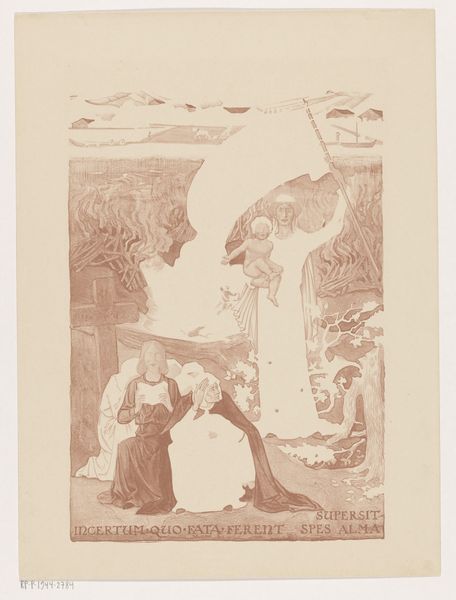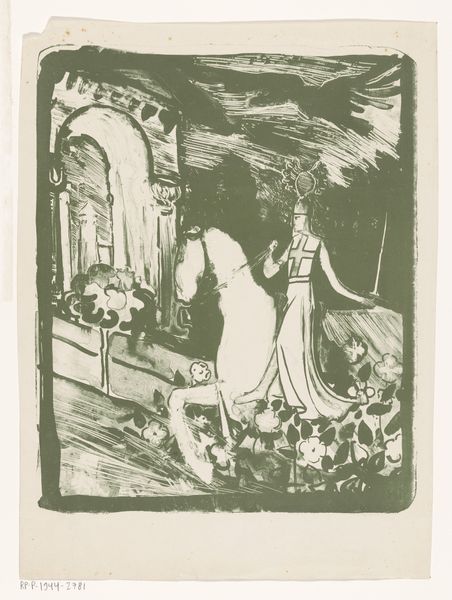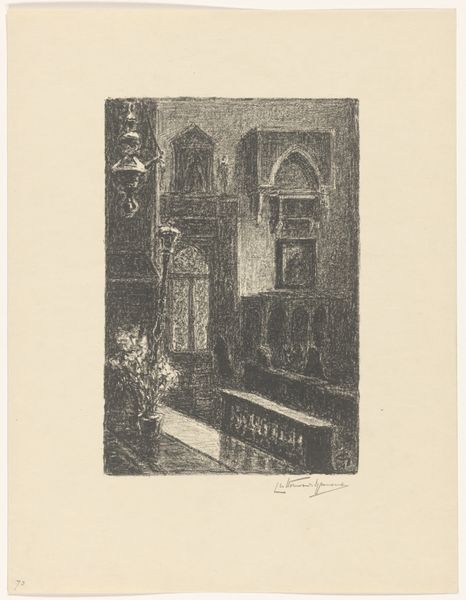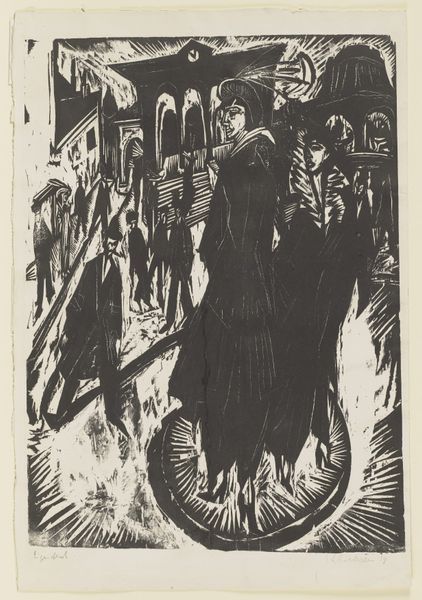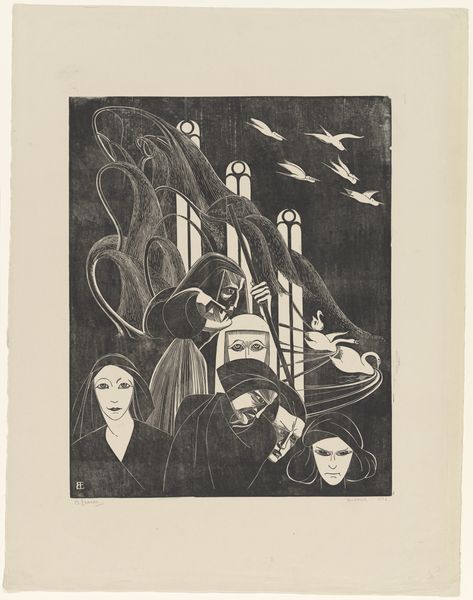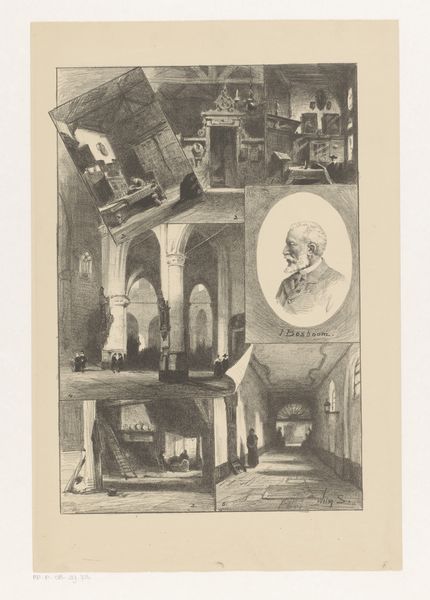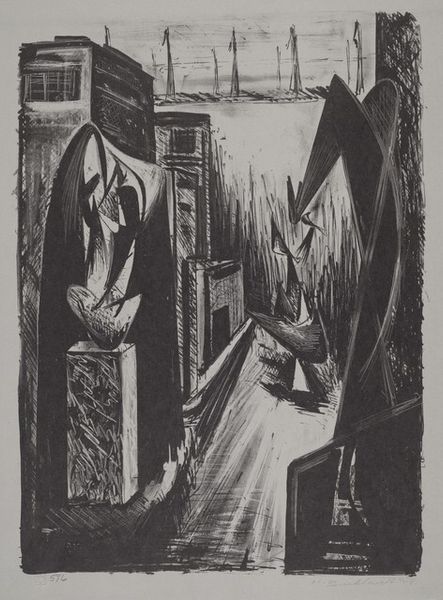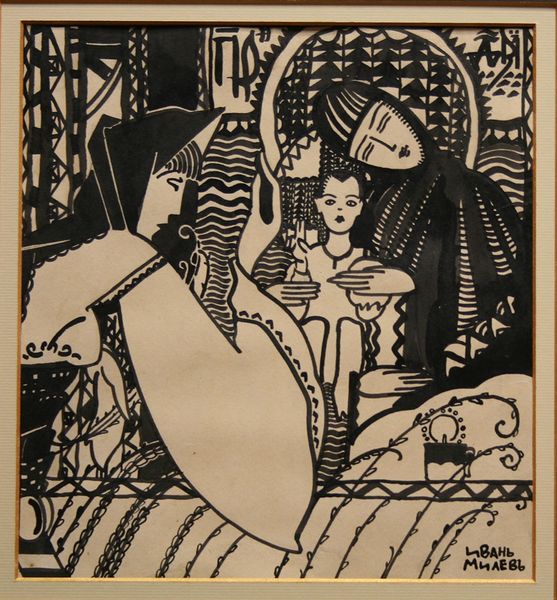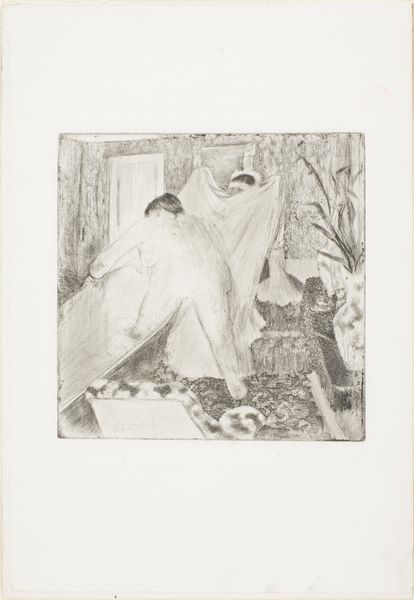
drawing, print, woodcut
#
drawing
# print
#
old engraving style
#
caricature
#
figuration
#
woodcut
#
line
#
symbolism
#
nude
#
erotic-art
Dimensions: height 433 mm, width 324 mm
Copyright: Rijks Museum: Open Domain
Curator: Let's talk about this intriguing print by Bernard Essers, "Wakende vrouw" from somewhere between 1903 and 1920. It's a woodcut, quite striking in its composition. Editor: Yes, a real mood piece. Dark and intimate, wouldn't you say? It makes me think of shadowed chambers and hushed secrets. And such stark contrast! Curator: The contrasting blacks and whites are essential to the symbolic language here. Notice how Essers carves out every detail, every texture – from the draping cloth to the filigree of the arches. The process itself, this meticulous carving, adds a certain… gravity, don't you think? Editor: Absolutely. The labor intensifies the sense of confinement and interiority. And that intricate detail is fascinating: this is much more than decoration, but it almost has a vital and essential feeling. Curator: Precisely! It reflects the Symbolist movement’s concern with interior states, using the nude figure and enclosed space to represent a kind of psychological landscape. This print becomes like a portal to another world. The woman watching over the sleeping man perhaps suggests the powerful forces of vigilance and…perhaps temptation. Editor: Temptation, yes, or perhaps mourning. I feel that this intimate chamber has the quality of both the interior of the self, and a theatrical stage. Curator: Interesting you mention stagecraft! Woodcut prints such as this were incredibly popular among the artist co-operatives who looked at democratizing art and circulating images amongst the masses. And the Orientalist flair may seem aesthetic now, but also reflects a market interest in exotica for an emerging middle class. Editor: I’d add too that its scale and the very directness of its materials invites us in and insists upon being felt in the fingertips as much as read through our eyes. What I see is a really self-aware combination of image, process, and desire! Curator: Yes! We get such a visceral sense of those textures, which almost makes you question their veracity and our own as observers. Well, what a deeply moving work to experience today, so full of its own layered past! Editor: Definitely, it's given me new ideas about considering an artwork's making, meaning, and message—thank you.
Comments
No comments
Be the first to comment and join the conversation on the ultimate creative platform.
